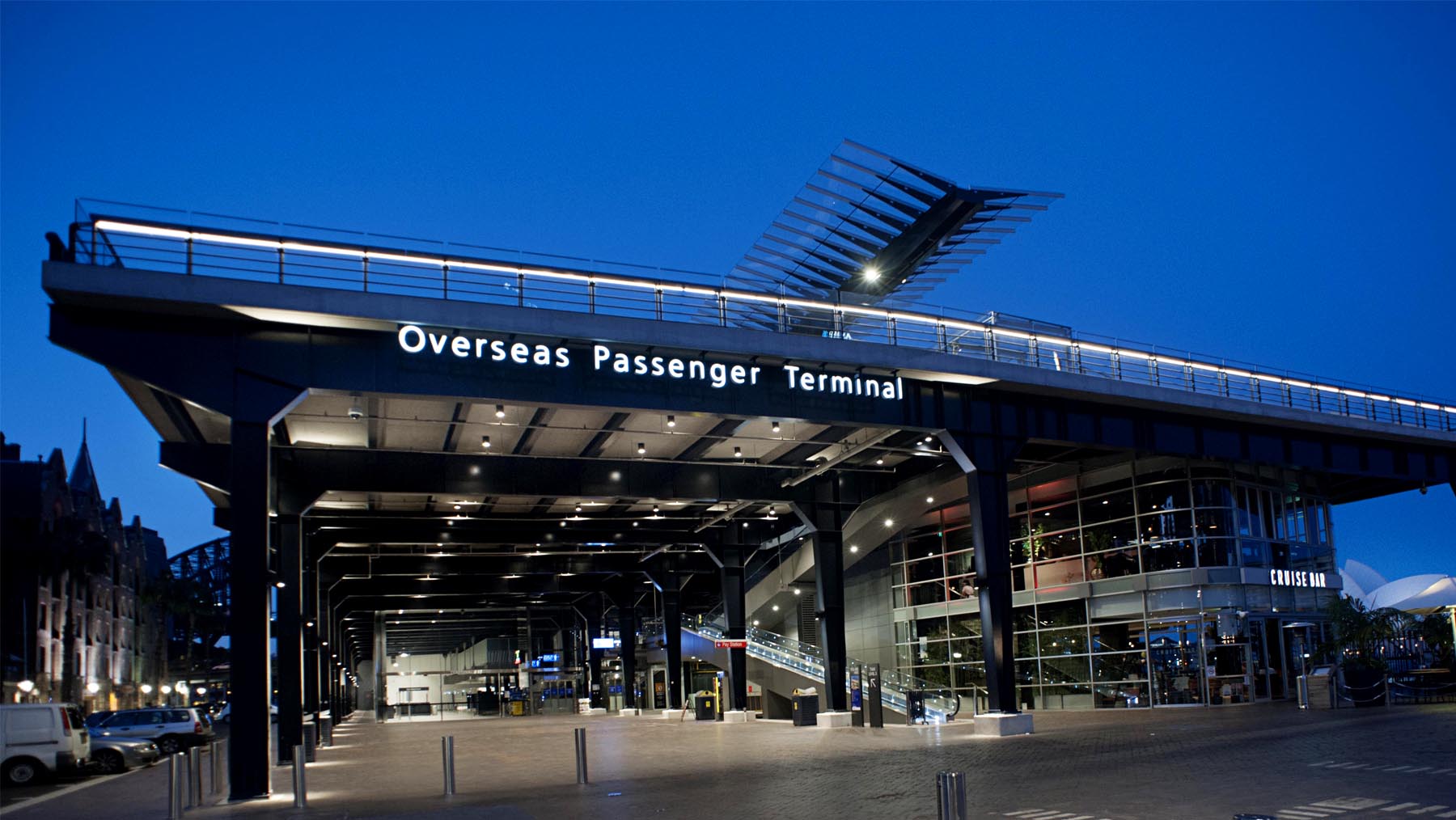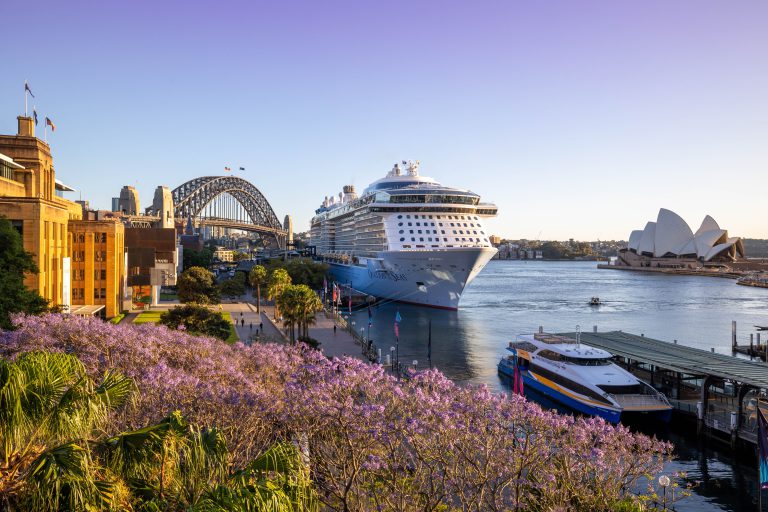As the cruise industry gears up a political campaign to fight for lower port charges and less regulation, a Cruise Passenger investigation shows port charges are three times as high as the global average.
Last week we revealed that major cruise lines are reducing their Australian capacity by as much as 30%, meaning a huge blow to the economy and higher costs for cruisers.
The cruise industry is worth $5 billion and port charges bring in some $32 million a year.
The industry is citing Australia as having the highest costs in the world, and port charges can be one of the biggest.
Port charges can be tricky to calculate. Some charge cruise ships on a per-passenger basis, while others charge cruise ships based on their gross register tonnage. Then sometimes cruise lines need to deal with extra tariffs such as a tourism tax, environmental levies, or more.
However, the research shows that it’s costing cruise lines substantial amounts of money to cruise in Australia, particularly in Sydney and Melbourne, versus in other parts of the world.
Last year, NSW saw 720,849 cruise passengers, which based on Sydney’s port tax of $44.72 per passenger, comes out to $32,236,367.3 to be paid by the cruise lines across the season.
Port charges: The background

Sydney’s port facilities are owned by the NSW Government. Cruise Passenger has asked Jo Hallen, Ports Minister, for comment and is awaiting a response.
While all ports charge, as the table below shows, cruise lines are having to spend excessively more to dock in Sydney or Melbourne than in other ports.
Major cruise lines have revealed to Cruise Passenger they don’t believe Australian state governments that comprehensive plans to address infrastructure needs such as dry dock and hull-cleaning facilities, capacity issues, and high operating costs.
The table below shows how much it would cost to dock Quantum of the Seas at major ports around the world, as well as how much certain destinations would pay in total if they had the same as NSW’s 720,849 passengers in a season.
| Port | Price to dock Quantum of the Seas | Season price to dock all NSW Passengers from 2023 |
| Sydney | $219,351.6 | $32,236,367.3 |
| Melbourne | $156.960 | $23,067,168 |
| Barcelona | $22,808.25 | $3,351,947.85 |
| Amsterdam | $70,165.1 | $10,314,255* |
| Miami | $93,685 | $13,768,216 |
| Rome | $53,317 – $124,881 ($89099 average) | $7,835,628.6 – $18,352,815.5 ($13,094,221.1 average) |
| Juneau | $95,745.6 | $14,070,972.5 |
| Cozumel | $63,830.3 | $9,383,010* |
| Singapore | $54,690.75 | $8,037,466.35 |
| St Thomas/St John | $50,472 | $7,417,536.2 |
| Port Canaveral | $28,841 | $4,239,627* |
| Average of non-Australia ports | $67329.5 | $9,898334.5 |
| Sydney surplus versus average | $152,021.5 | $22,338032.8 |
The takeaways
- Per ship or per person, both Sydney and Melbourne are charging cruise lines more than all the other major cruise ports.
- For the number of passengers it sees per season, Sydney costs on average $22 million more per season than other major cruise ports.
- Sydney costs on average $152,021.5 more per Quantum of the Seas-sized ship
- Many Australian ships that have left have gone to the Caribbean, it can be seen that the port fees of Miami, Canaveral, Cozumel, and St Thomas/St John are much less expensive than Sydney and Melbourne.
- Melbourne’s port fees have recently increased, with cruise executives from Carnival directly pointing to the rise as a reason for the cruise lines’ reduced presence in the port.
- High and rising port prices offer less incentive for cruise lines to try and grow in the region, as expenses will rise with more passengers, limiting profit margins.
- Other purported factors such as fuel costs, supplies costs, lower onboard spending, and more have been suggested
- Port fees exist for maintenance and infrastructure purposes. However, despite this, Sydney has been criticised for its limited cruise capacity, with NCL executives directly addressing this as a reason for ceasing homeporting operations in Sydney.
Fuel cost
- While the cost of cruise ship fuel is vastly fluctuating and not always publically available, there is one very evident reason why it costs more to fuel an Australian cruise ship than for example, in the Caribbean.
- To sail from Sydney to Noumea is 1240 nautical miles, however, to sail from Port Miami to Nassau is just 159 nautical miles.
- Furthermore, for non-homeporting Australian ships, there is a significant distance to sail to arrive in Australia.
- Josh Weinstein said Carnival lost almost $20 million in just three months due to spiking fuel prices last year, highlighting the effect of fuelling on a cruise line’s profitability.
Methodology and port charges (all prices in AUD)
- Sydney charges $44.72 per cruise passenger
- Melbourne charges $32 per cruise passenger
- Barcelona charges $4.65 per cruise passenger
- Amsterdam charges $0.416 per gross tonne + $22.67 per passenger per 24 hours, their charges were calculated on an eight-hour stay
- Rome charges $10.87 for simply disembarking, or up to $25.46 for a roundtrip cruise homeporting out of Rome.
- Miami charges $19.19 per passenger
- Juneau charges $19.52 per passenger
- Cozumel charges $0.392 per gross registered tonne
- St Thomas/St John charges $10.29 per passenger
- Port Canaveral charges $0.411 per 24 hours, their charges were calculated based on a 10-hour stay
- For the ports that charge per gross registered tonne (Amsterdam, Cozumel, and Port Canaveral) their season price was calculated by the cost of 147 port calls of Quantum of the Seas, which equals NSW’s number of cruise visitors from 2023.










I’m sure these state governments would allow the cruise companies to club together, buy prime waterfront land in Sydney or Melbourne and run their own facilities – With appropriate developer contributions to pay for impact on connecting infrastructure.
$44 per passenger disembarking (which will be factored into the cruise price) does not seem that unreasonable. I mean, those passengers benefit from the wharf infrastructure, subsidies on their public transport trips in town (at least $10 per trip). Departure into a prime location (in Sydney), etc.
Yep, that’s Australia, ultra expensive everything. Feathered beded labor, over the top petty regulation. We’re super good at it.
I’d be curious to see what Queensland/Brisbane port charges are like compared to Sydney and Melbourne. Especially giving public statements about investigating a second ship berth at BICT made late last year and more recent discussions about connecting BICT via a ferry terminal to the city and bay.
Port fees are passed straight on to passengers and if a port is missed they are usually refunded. I can’t see that these fees are the major deterrent if the passengers pay not the cruise line.
Bring the Ships to Brisbane then
I thought port taxes were paid by the passengers in the final costings….it always says port taxes on the bill???
Another big tourism award to the PORT UNIONS AND GOVERNMENTS…NOT.
High fees come from massive wages and fees imposed by unions and governments in NSW and Victoria driving business away. WELL DONE.
BTW…Why is there no data for Brisbane???? Is it too embarrassing to show against NSW and Victoria port charges or is it even worse and the authorities will not release data ?
Can we get data for Brisbane and indeed Cairns for that matter.
Another big tourism award to the POR UNIONS AND GOVERNMENTS…NOT.
High fees come from massive wages and fees imposed by unions and governments in NSW and Victoria driving business away. WELL DONE.
BTW…Why is there no data for Brisbane???? Is it too embarrassing to show against NSW and Victoria port charges or is it even worse and the authorities will not release data ?
Can we get data for Brisbane and indeed Cairns for that matter.
Excellent article. It beggars belief that sane, experienced and smart business execs can execute such idiotic rules and regulations.
They should all be sacked immediately.
Who are these people accountable to?
They should be replaced and people who have common sense appointed and get this situation changed ASAP so we are more in line with port charges such as Miami and Barcelona etc.
Embarrassing to say the least.
It would be interesting to see costs out of other Australian ports, not just Melbourne & Sydney.
Given port taxes and charges are passed on to the customer, with Princess Cruises anyway, it would appear the reason Melbourne is now being virtually ignored as a home port by Princess is not due to charges which are far less than Sydney, but due to the geographical location of Melbourne and the distances needed to be travelled to get to itinerary ports.
If Princess continues this trend then Melbourne based customers will need to find around $1000 per couple to travel Melbourne to Sydney to board a cruise.
I, for one, would prefer to pay the $1000 as part of my fare and have the ship based in Melbourne.
I feel sure many Melbourne based customers would feel the same.
Aren’t the port charges passed on to passengers anyway?
While there may be a case here, it’s a fact that our governments for many decades are used to gouging travellers. In the same way we have the world’s most expensive passports, and some of the highest airport departure fees. This isn’t about cruising being targeted; just that travel is seen as an opportunity to charge excessively generally.